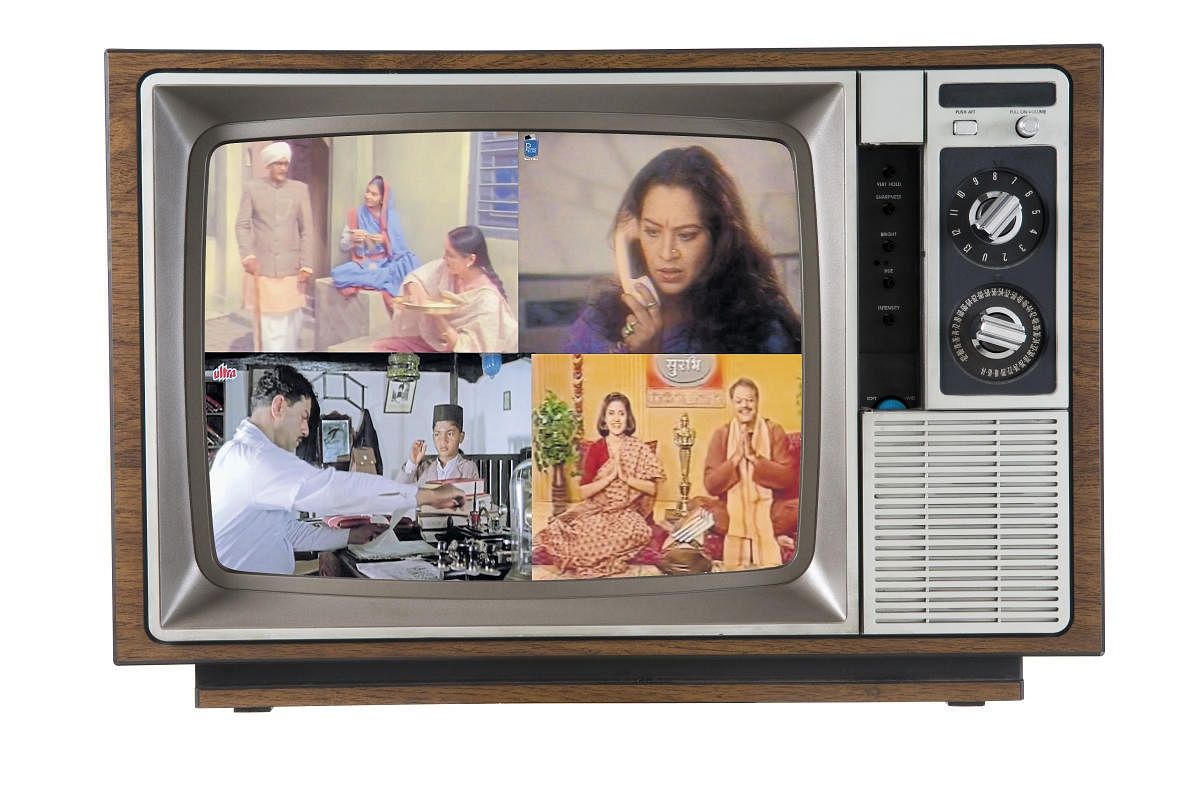
Metrolife asked some well-known Bengalureans about their memories of the ‘idiot box’ from their younger days.
Sandalwood actor, director and politician Upendra recollects watching cricket matches through a “big black and white box”, around three decades ago. “I still remember watching Srikanth and Gavaskar on the pitch. Watching ‘Chitramanjari’ (film songs) once a week was a big craze then, followed by the ‘Ramayana’ and ‘Mahabharatha’,” he says.
Watching TV was a family affair earlier and now everyone is plugged to their smartphones for entertainment, the actor notes. “At home, we watch films together sometimes. Television content has changed drastically, even news is all about sensation now,” says Upendra.
The rainbow colour bar
Actor and dancer Lakshmi Gopalaswamy recollects the nostalgic tune that came alongwith the swirling icon of Doordarshan.
“For me the thrilling part was watching the Asiad Games in the 80s. My father was the secretary of the Karnataka Table Tennis Association and he went as a delegate to the inaugural ceremony. We were at my uncle’s house in Delhi and we saw the transition of black and white to colour relay,” she says.
The sight of the rainbow colour bar signal before a programme started was thrilling. “Watching my mother, who was the first artist from Karnataka to be recorded for the national programme of music, was always exciting,” she says.
She recalls enjoying ‘Chitrahar’.”I used to wait for programmes on dance. In Kannada, Sutta Mutta, a programme with cultural events, where I was also featured sometimes is a fond memory,” she says. “‘Rajani’, ‘Yeh Jo Hai Zindagi’ and ‘Surabhi’ hosted by Renuka Shahane and Siddharth Kak, were other favourites,” she adds.
Remembering title songs
Hindustani classical singer Sangeetha Katti remembers television came to her hometown Dharwad in 1984, around the time Indira Gandhi was assassinated. “It was the first news we watched. I was in my high school, we didn’t have a TV then, since my mother wanted me to complete my metriculation exams without any distractions,” she says.
From programmes like ‘Krishi Darshan’ to ‘Rangoli’, there were varied programmes on Doordarshan. Sangeetha fondly remembers the title song of ‘Buniyaad’ by Anup Jalota. “The track was like many others from those times, remains fresh in one’s memory,” she adds.
Educative shows like ‘Bharat Ek Khoj’, based on Jawaharlal Nehru’s book, were about the history of India. “‘Surabhi’ was an all time favourite. ‘Hum Log’ that was about social issues, ‘Nukkad’ and ‘Circus’, detective shows like ‘Karamchand and Kitty’ and ‘Byomkesh Bakshi’, and Quiz Time were other shows we watched,” she adds.
‘Malgudi Days’ was a beautiful blend of Karnataka and a national platform, she adds.
‘Four stages of TV’
According to B Suresha, film director, producer, screenwriter and actor, the journey of television can be divided as pre-liberalisation, post-liberalisation, post open market economy and post capitalistic open market television.
He says, “We started watching TV in 1973, when India-West Indies played a cricket match in Bangalore. With the advent of cricket, every second household purchased a television. Kannada programmes were just a 30-minute slot from 1983 to 85, became a two-hour slot from 1985, and we later had our own Kannada channel.” Two shows, a comedy programme ‘The Lucy Show’, and a Japanese show ‘Oshin’, paved the way for many others to craft their material in India. “’Nukkad’, ‘Yeh Jo Hai Zindagi’, ‘Tamas’ and ‘Buniyaad’ were watched by all. In Kannada, it was programmes like ‘Namma Nammalli’,” he says.
Content was the king then but once the open market economy started, every language had its own channel. “Slowly private channels started playing up, mega serials and other formats started. Content-driven programmes became glamour driven. Programmes like ‘Shanti’ arrived. In 2014, there was a paradigm shift, where things turned sensational,” he says.
‘Emphasis on morals and culture’
M K Raghavendra, film and literary scholar, critic and writer, remembers Doordarshan to have socially conscious content on it. He says, “It was meant to be content which people should see and would be good for them. Content makers tried to make shows like ‘Hum Log’, ‘Buniyaad’ and ‘Nukkad’, which were better than Indian cinema then. TV used to screen European classic films at late nights and art films on Sundays.”
It was a moral period for public entertainment. “Even in radio, from taking classical music to the public to what it is today, things were different. There was emphasis on content that was moral and culture,” he says.
The entry of private channels changed things. “Now OTT platforms have come, one has access to good content. There are many good web series and mini series that are doing better than Hollywood.”